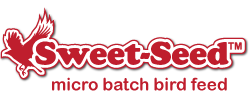How Can I Attract Hummingbirds to My Feeders?

Feeding hummingbirds can be a joy for birders, but just putting out a nectar feeder will not make flocks of hummingbirds suddenly appear. With some easy tricks, however, you can invite hummingbirds to your feeders and your yard will be a-flutter with these flying jewels before you know it.
Use an Attractive Feeder
The type of feeder you use can be vital for attracting hummingbirds. While most hummingbird feeders have a red base, red feeding ports, or some other red accent, choosing a feeder with facets or texture on its glass or base will help the birds find it when sunlight sparkles off the surface. Positioning the feeder in an open, sunlit area will help it be more visible to hummingbirds nearby, and once they notice the feeder, they will investigate it.
It is important that the feeder not be too attractive to the wrong visitors, however. Take simple steps to keep bees, wasps, and praying mantises away from the feeder, such as removing nearby cover for camouflaged insects or using sturdy bee guards to protect feeding ports. These large insects can be aggressive and even dangerous to hummingbirds, and if the feeder is overrun with insects, the birds will not visit as readily.
Even if hummingbirds aren’t visiting the feeder right away, it is important to keep it clean and the nectar fresh. Old, spoiled nectar is not as attractive to hummingbirds and can harbor bacteria and fungus that can be toxic to the birds. Clean the feeder and replace the nectar every few days (more frequently during very hot weather), and whenever a hummingbird finds it, they will find a meal they can enjoy.
Getting Hummingbirds’ Attention
Even the very best hummingbird feeder filled with fresh nectar will not attract hummingbirds if the birds don’t know the feeder is available. In addition to positioning the feeder in a highly visible, sunlit area, there are other steps that can catch hummingbirds’ attention and help them discover the feeder.
Plant Red Flowers – Adding red or other bright-colored flowers nearby will create a larger color palette for hummingbirds to notice. Even better is planting nectar-rich flowers that can also feed hummingbirds, such as bee balm, salvia, columbine, or butterfly bush.
Add Even More Red – You can’t have enough red to attract hummingbirds. Add a red gazing ball, paint patio furniture red or use red cushions, opt for red flowerpots, or add festive red flags, stepping stones, or other accents to your yard and garden for hummingbirds to notice.
Skip the Pesticides – As much as hummingbirds love nectar, they also need insects in their diet to provide essential protein and key minerals. Avoid using insecticides in your yard, and hummingbirds will happily serve as natural pest control.
Make a Splash – Hummingbirds need water to bathe and preen, but they don’t use standard bird baths as much as larger birds. Instead, opt for a mister or bubbler for hummingbirds to use, and they’ll be attracted by the sounds and sparkles of the moving water.
Build a Butterfly Garden – Many of the same nectar-rich flowers that are ideal for butterflies will also attract hummingbirds. Furthermore, the activity of many visitors in a butterfly garden will also catch hummingbirds’ notice, and the bright colors are attractive too.
Above all, it is important to be patient when attracting hummingbirds to feeders. It may take some time, even as long as several weeks, to successfully attract hummingbirds, but once they learn about a good, reliable food source, they can be very loyal to the feeding station. Gradually, the hummingbird flock will grow as new generations of hummingbirds return to the same favored feeding areas, and before long, you’ll need new and larger feeders to feed more and more hummingbirds.
